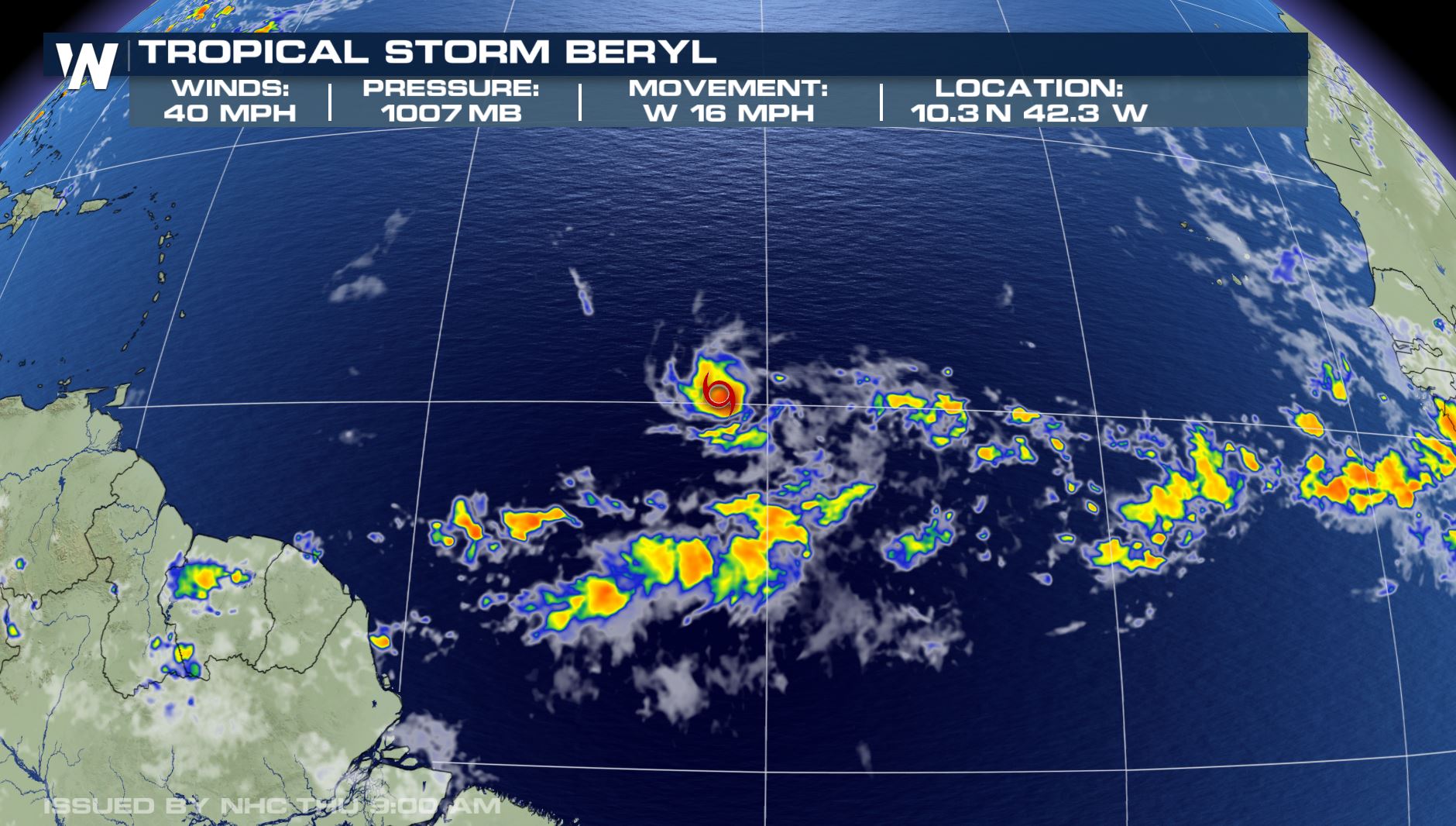Storm Beryl’s Projected Path

Storm beryl path – Storm Beryl is a Category 1 hurricane that is currently located in the Atlantic Ocean, approximately 1,000 miles east of the Lesser Antilles. The storm is moving west-northwest at 15 mph and is expected to strengthen to a Category 2 hurricane by Friday.
Storm Beryl continues to meander over the Atlantic Ocean. To better understand its potential path, meteorologists are relying on hurricane beryl spaghetti models. These models provide various simulations of the storm’s trajectory, helping forecasters make informed predictions about its future movement.
By analyzing these models, experts can gain valuable insights into the potential impact of Storm Beryl on coastal communities.
The projected path of Storm Beryl takes it over the Lesser Antilles on Saturday, then near or over Puerto Rico and the Dominican Republic on Sunday. The storm is then expected to turn north and move along the east coast of the United States, bringing heavy rain and possible flooding to areas from Florida to Maine.
Storm Beryl continues its westward path, bringing heavy rainfall and strong winds to the Caribbean. In Puerto Rico, the storm has caused flooding and power outages, leaving many residents without electricity. For more information on the impact of Beryl in Puerto Rico, please visit beryl puerto rico.
As the storm moves away from the island, it is expected to weaken, but it will continue to bring heavy rainfall to the region. Stay tuned for updates on Storm Beryl’s path.
Factors Influencing the Storm’s Movement
The movement of Storm Beryl is being influenced by a number of factors, including:
- Wind patterns: The storm is being steered by the prevailing easterly trade winds.
- Atmospheric conditions: The storm is moving through an area of warm, moist air, which is providing it with the energy it needs to strengthen.
- Ocean currents: The storm is also being influenced by the Gulf Stream, which is a warm ocean current that flows north along the east coast of the United States.
Potential Impacts of Storm Beryl: Storm Beryl Path

Storm Beryl is expected to bring heavy rainfall, strong winds, and storm surge to the affected areas. The storm’s intensity is expected to reach Category 1 hurricane status, with wind speeds of up to 90 mph and rainfall amounts of up to 10 inches. The areas most likely to be affected by the storm are the coastal regions of Florida, Georgia, and South Carolina.
Potential Risks to Life and Property
The strong winds and heavy rainfall associated with Storm Beryl pose significant risks to life and property. High winds can cause damage to buildings, power lines, and trees, while heavy rainfall can lead to flooding and mudslides. Storm surge can also cause significant damage to coastal areas, inundating homes and businesses and eroding beaches.
Measures to Prepare for the Storm’s Impact
To prepare for the impact of Storm Beryl, residents in the affected areas should take the following steps:
- Develop an evacuation plan and identify evacuation routes.
- Secure loose objects outside your home, such as patio furniture and grills.
- Stock up on emergency supplies, including food, water, batteries, and a first-aid kit.
- Stay informed about the storm’s progress and follow the instructions of local officials.
Historical Context and Comparison
To fully understand the significance of Storm Beryl, it’s crucial to compare it to previous storms that have impacted the same region. By analyzing historical data, we can gain insights into the frequency, intensity, and potential impacts of similar storms.
Based on historical records, the region has experienced several notable storms in the past, including hurricanes, tropical storms, and cyclones. These storms have varied in their intensity and tracks, but they have all left a lasting impact on the communities they have affected.
Data on Past Storms, Storm beryl path
- In 2018, Hurricane Michael made landfall as a Category 5 hurricane, causing widespread damage and flooding in Florida and Georgia.
- In 2017, Hurricane Irma brought heavy rainfall and strong winds to the region, resulting in power outages and flooding.
- In 2004, Hurricane Ivan made landfall as a Category 3 hurricane, causing significant damage to infrastructure and property.
Lessons Learned
By studying the impacts of these past storms, we can identify patterns and learn valuable lessons that can inform our preparedness efforts for Storm Beryl. These lessons include:
- The importance of early evacuation and sheltering in place during severe storms.
- The need for robust infrastructure and building codes to withstand hurricane-force winds.
- The value of community preparedness and collaboration in responding to and recovering from storms.
By applying these lessons learned to Storm Beryl, we can take proactive steps to mitigate its potential impacts and ensure the safety and well-being of the communities in its path.
